My dear friends, I invite you to an incomparable walk through the mysteries of the late antique Roman fortress and fortified settlement of Tsari Mali Grad.

Currently, the village has been wonderfully restored and anyone who wishes can visit it, take a walk along the ancient fortress walls and enjoy the fantastic panoramic views revealing from Verila Mountain towards the vast and wonderfully beautiful Samokov Valley, surrounded from the north by Plana Mountain and Vitosha, and in particular towards the majestic Palakariata Valley of the Palakaria River, a left tributary of the Iskar.

The site on which the fortress is built is easily accessible and offers numerous attractions for visitors of all ages, including an archaeological museum, recreation and play areas, and educational programs.

The Tsari Mali Grad complex includes several sites - the medieval church of St. Petka, an ethnographic complex in the village of Belchin, as well as the late antique fortress of Tsari Mali Grad itself.

In this post I will tell you about the late antique Roman fortress and fortified settlement of Tsari Mali Grad, located on the hill of Sveti Spas above the village.
Saint Spas Hill and Saint Ivan Peak
St. Spas Hill and St. Ivan Peak are located on the ridge of Verila Mountain. The hill is an integral part of the centuries-old history of the region. Legends about a large ancient settlement known as "Tsar Mali Grad" are associated with it, which supposedly means "Little Tsarigrad". There, until the 19th century, the white stone walls and towers of an ancient fortress were still partially preserved. They reminded the local population of Tsari Grad. To this day, in the mental culture of Belchin residents, "Tsar Mali Grad" is the old name of the village of Belchin.
All the legends and traditions told are the reason for launching large-scale archaeological research on the St. Spas Hill in 2007. At the very beginning of the excavations, it became clear that immediately below Mount Sveti Ivan, on the very hill of Sveti Spas, there are the remains of an ancient Roman fortress with military and security functions, which in its later stages grew into a fortified settlement.
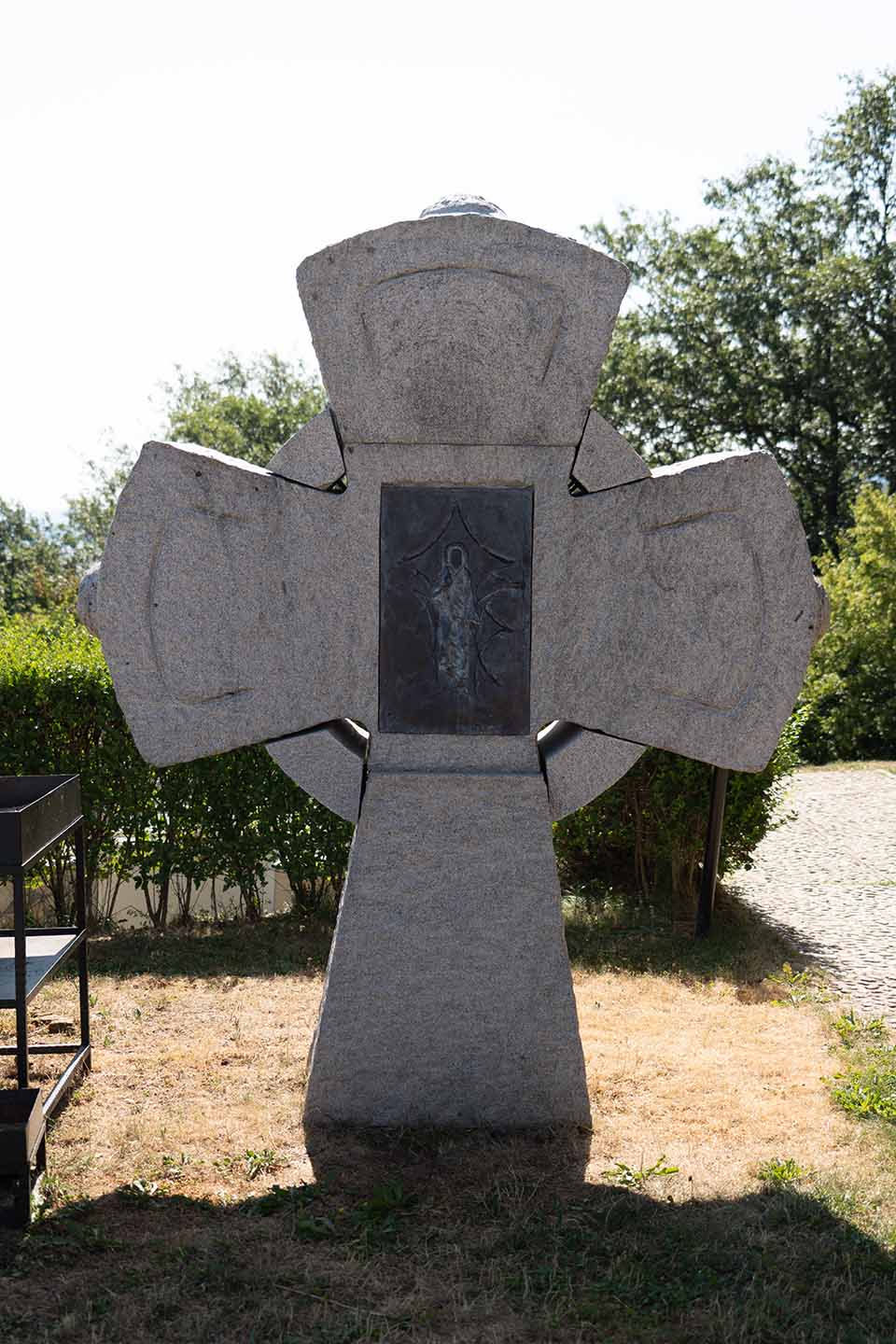
Various structures from the fortification (defensive fortress towers, fortress gate and defensive fortress walls), residential buildings located around and adjacent to the defensive fortress wall, as well as remains with cultural layers of settlement life inside the site were studied and documented.
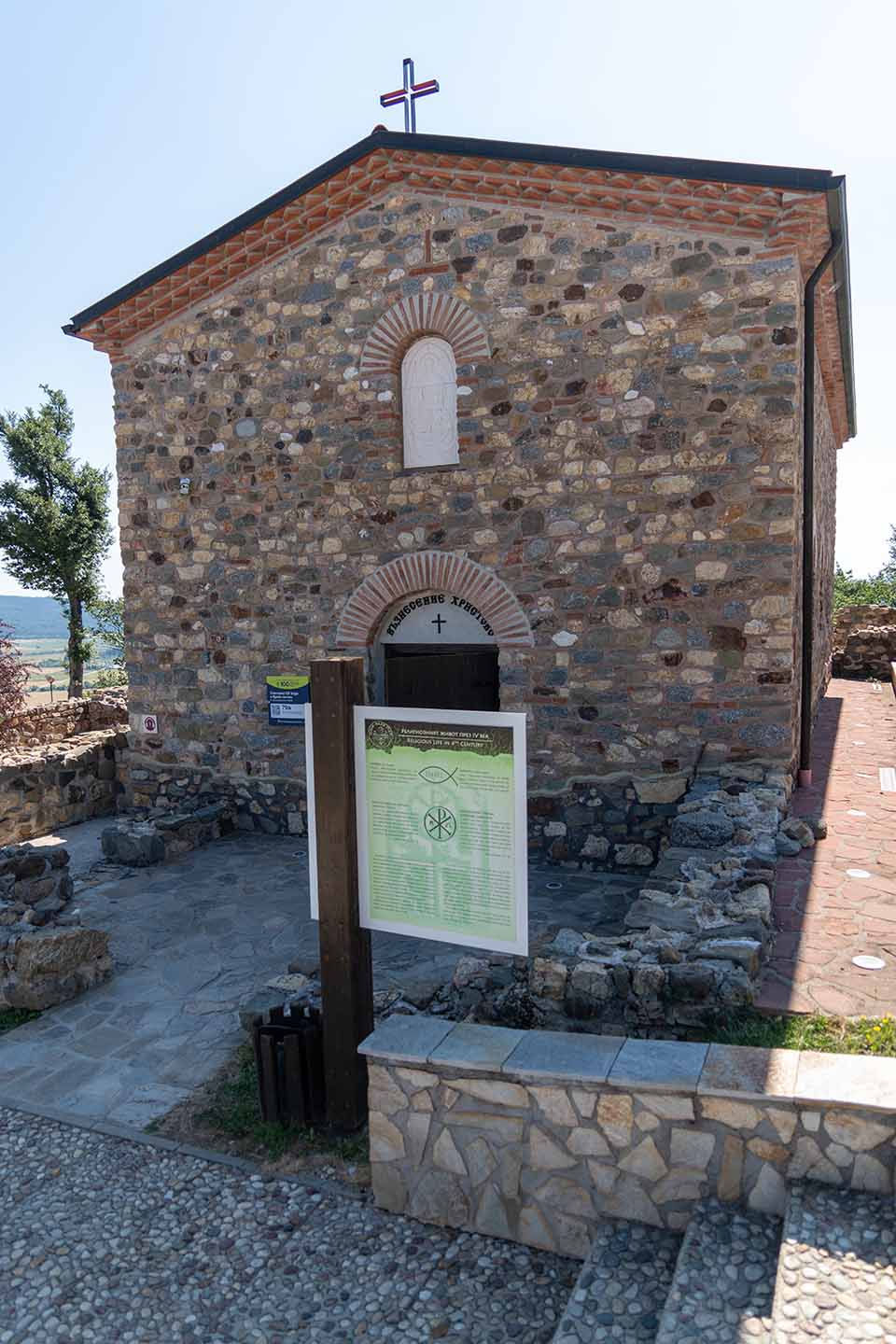
There, at an altitude of 990 meters, evidence has been found of the continuity of the cult place over the millennia - from a pagan sanctuary of the Thracians, through an early Christian church from the 4th century, an early Christian basilica from the 6th century, the medieval church of the Ascension of Christ, built in the second half of the 15th century, to a relic among the oak grove that has survived to this day.
Tsari Mali Grad is a historical site of exceptional importance. Six years have passed since my last visit here, and I am again infinitely impatient and curious, like a child, to peer again into the secrets that this extremely interesting complex holds.

Built during the early Christian period, the fortress represented an important center for both defense and cultural life.

Archaeological research reveals that the site was chosen strategically, controlling important ancient roads and natural resources such as mineral springs and mines.

Tsari Mali Grad is an important historical site that testifies to the rich past of the region.

The fortress has been restored and modernized to provide its visitors with interactive exhibits and educational programs that reveal the life and culture of the ancient inhabitants of these lands.

The place is ideal for family outings and offers unforgettable experiences for all ages.

The fortress reveals fortified settlement structures such as defensive fortress towers, a fortress gate and defensive fortress walls.

The research uncovered numerous architectural remains and excavation finds such as coins, jewelry, and tools, shedding light on the site's past.
It is assumed that the construction of the fortress began during the reign of Emperor Valentius Flavius, who ruled the Roman Empire from 364 to 378, and was an exceptionally good military leader, known for his military campaigns and his efforts to protect the empire from barbarian attacks.

The place on which the fortress was built was perfectly chosen. From the top of the hill, an incomparable and picturesque view opens up to the Palakaria*, the Samokov Field and the entire Samokov Valley.
*Palakaria means stony water. There is a legend according to which the Palakaria River is named after the maiden Pulcheria.
Pulcheria was the daughter of Emperor Theodosius I and his first wife Aelia Flacilla. She was the sister of the emperors Arcadius and Honorius, as well as the half-sister of Galla Placidia.
Pulcheria was gifted with immense beauty and refined and unfailing kindness. With them, she captivated the forest spirits of the mountain to madness. In an attempt to escape from the maddened spirits and their mind-boggling love, the maiden Pulcheria drowned herself in the river, which was later named after her.

On the other hand, the gushing natural hot mineral springs in present-day Belchin and the region are an excellent prerequisite for the emergence and development of an ancient settlement in these places.

Today, the southern, northern and eastern defensive walls of the fortress have been preserved and restored.

Now let's get ready to see what interesting artifacts archaeologists have discovered during the numerous archaeological excavations carried out at these sites and which have been collected in the several extremely rich, detailed and informative museum exhibitions.

With excitement, I pass through the huge main northern fortress gate and once again embark on the adventure called "Kings of Mali Grad".
The House of the Muses
The House of the Muses is a literal translation of the ancient Greek word meaning museum. That is, according to the original definition, it is a place where the nine muses of the arts from ancient Greek mythology inspire, entertain, educate, and nurture.

Based on this ancient definition, the project for the restoration and conservation of the late antique Roman fortress and fortified settlement of Tsari Mali Grad was developed, as well as the arrangement of the various expositions on the territory of the museum complex.
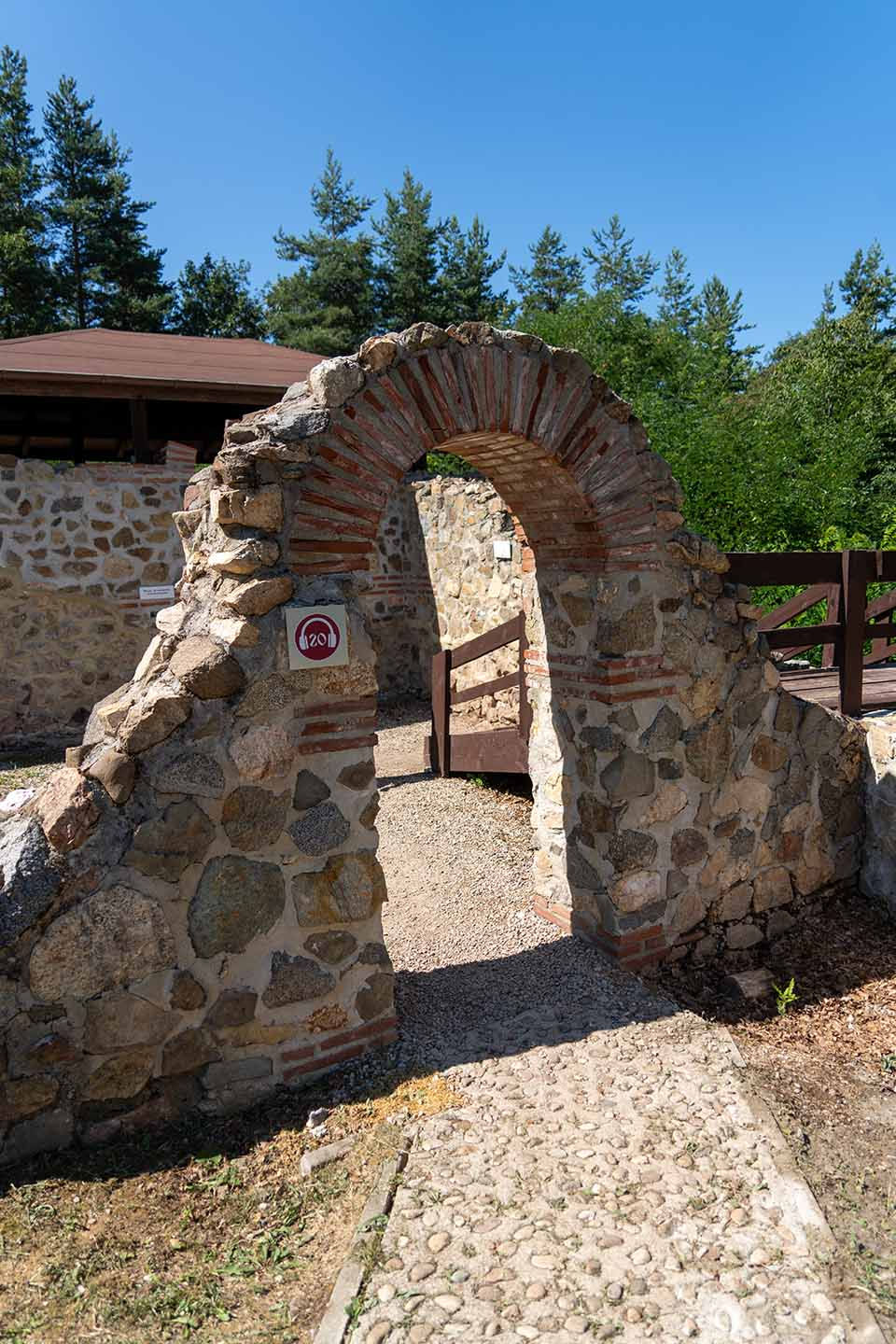
The westernmost point of the fortress is the place where several prehistoric artifacts were discovered.
Prehistory
Prehistoric artifacts and documented archaeological structures are limited in number but interesting in content.

The highlight is the Thracian cult pits, presented through a volumetric model, information boards and original finds from the sanctuary in the area.
Another interesting highlight in the exhibition are stone boulders (megalithic measuring devices), on which the ancients tracked calendar cycles and constellations.
Some of the materials found from cult pits are presented in the "Prehistory" section, which is housed on the first floor of the northwestern defensive fortress tower (tower 1).

The northwestern defensive fortress tower (tower 1) is located to the right of the main fortress gate.

The rich material and cultural heritage of the late antique era is presented through reconstructions and original artifacts.
Life and livelihood in late antiquity
On the second and third floors of the northwestern defensive fortress tower (tower 1), visitors are immersed in the atmosphere of the daily life of the local civilian population of the period. Here, one can see a variety of original artifacts discovered during archaeological excavations in the area - livestock equipment, horseshoes, petals, bells and collars. The collection of jewelry is also rich, including fibulae, rings, bracelets, buttons, earrings and necklaces.
The extremely diverse exhibition on these floors in the northwestern defensive fortress tower (tower 1) introduces and informs guests of the museum complex about the crafts of the locals, trade relations with the other ancient centers of the empire, and tells about the influence of Christianity on spiritual life and its reflection in everyday life through Christian symbolism on everyday objects.
The third floor of the northwestern defensive fortress tower (tower 1) takes us to the defensive fortress wall, from where every visitor can gaze into the interior of the settlement.
The view towards the northeastern defensive fortress tower (tower 2) and the upper part of the northern fortress gate is also impressive.
From here, a delightful panorama opens up in the direction of the entire picturesque valley of the Palakaria River. In the distance, the blue-green ridges of Plana Mountain and Vitosha elegantly blend into the horizon with the blue azure. It is precisely at this place that you fully understand the intentions of the ancient builders, how and why they chose this very place for their next defensive fortress.
Highly excited and somewhat stunned by the information that literally flooded me, spicyly garnished with thrilling panoramas, I descend the stairs of the northwestern defensive fortress tower (tower 1), because the wonders of antiquity continue in the northeastern defensive fortress tower (tower 2), where I hurry to head, thirsty for knowledge.
Ceramics
Ceramics are the most widespread material at an archaeological site.

Ceramics carry the most complete information about the functional nature of the site and the chronology of past historical events.
On the first floor of the northeastern defensive fortress tower (tower 2), various types of household and cult ceramics are presented, discovered during the numerous archaeological excavations carried out at the site and the region.
The numerous statuettes, votive tablets and terracotta discovered on the first floor of the northeastern defensive fortress tower (tower 2) represent an inexhaustible source of information about the life, livelihood and way of life of the ancient inhabitants of the settlement.
Once again I am deeply amazed by what I saw! Once again I am looking at the incredible collection with unimaginable interest, built with a lot of love, the fruit of exceptional and tireless work! Once again I am trembling in anticipation of telling all this to you, dear friends!
Come here! Visit "Tsar Mali Grad" in case you haven't done so yet! There is definitely something to see and learn!
Here I am on the second floor of the northeastern defensive fortress tower (tower 2), where I am feverishly browsing the "Numismatics" section.
Numismatics
Coins are the most numerous finds from the site.
The discovered coins are an invaluable source of detailed information about the chronology, trade ties and relationships established during the late antique era.
The collection, displayed on the second floor of the northeastern defensive fortress tower (tower 2), includes coins from almost all known Roman emperors and various denominations.

One of the exceptional exhibits in this collection is a bronze minima coin of Empress Galla Placidia.
Legend of Galla Placidia
The daughter of Emperor Theodosius – Galla Placidia set out from Constantinople to Rome on a mission to free her son from captivity in Ravenna.
Before leaving, she met with her older brother Honorius, who was on his deathbed. The brotherly covenant was:
You will walk for many days!
You will pass through Augusta Traiana (today's Stara Zagora), then through Philippopolis (today's Plovdiv) and before reaching Serdica (today's Sofia), turn south.
There, at the foot of four mountains and along the Palakaria River, named so in honor of our relative Pulcheria, you will find a paradise with miraculous water!
Relax there!
Immerse yourself in the healing springs and fill all your amphorae with this miraculous water! You will be healthy and strong and the undertaking will be a success!
And so it happened!
Galla Placidia's army captured Ravenna, freed her minor son Valentinian, and proclaimed him emperor.
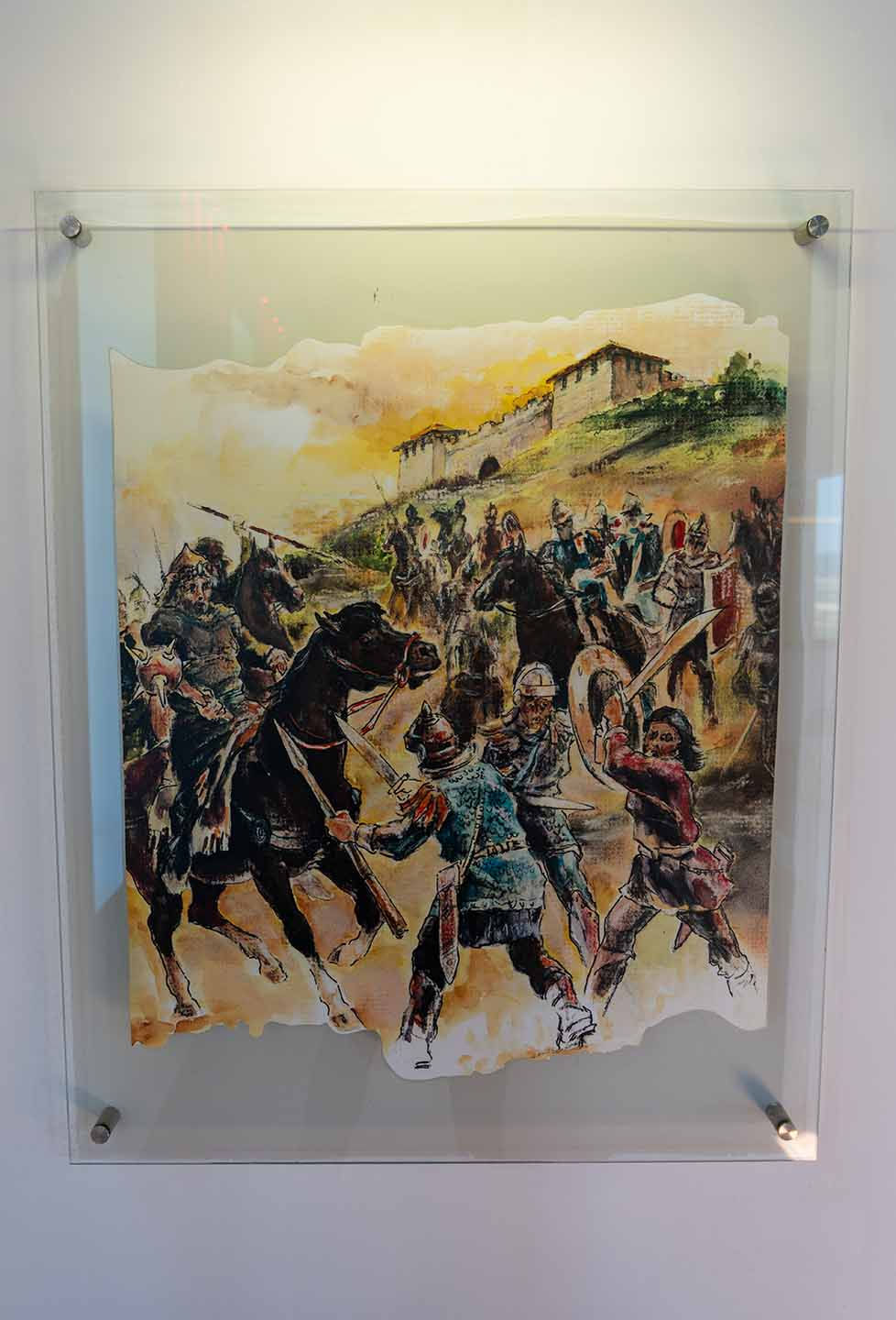
Amazed by the legend of Gala Placidia, I climb the stairs to the third floor, where the "Armament" exhibition is located.
Military life
The entire life of the fortress is connected with military and security functions.
The rich collection of numerous arrowheads, all kinds of knives, war balls and more can be seen by visitors.
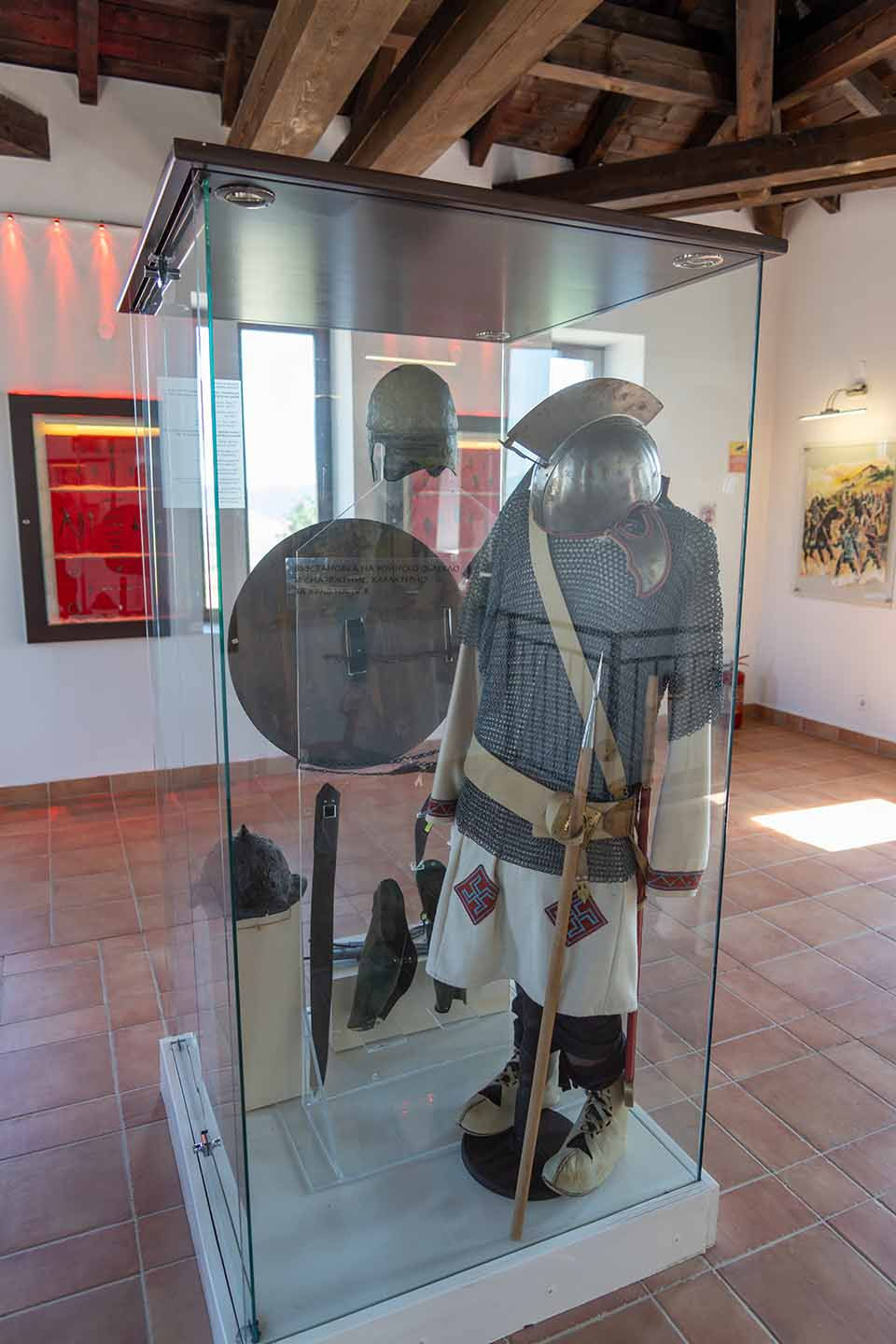
On the third floor, a reconstruction of a warrior in full combat gear is displayed - helmet, shield, sword and spear, as well as working reconstructions of siege equipment.

I go outside. The sun's generous rays gently caress the azure sky above me. The view of the interior of the village is impressive.
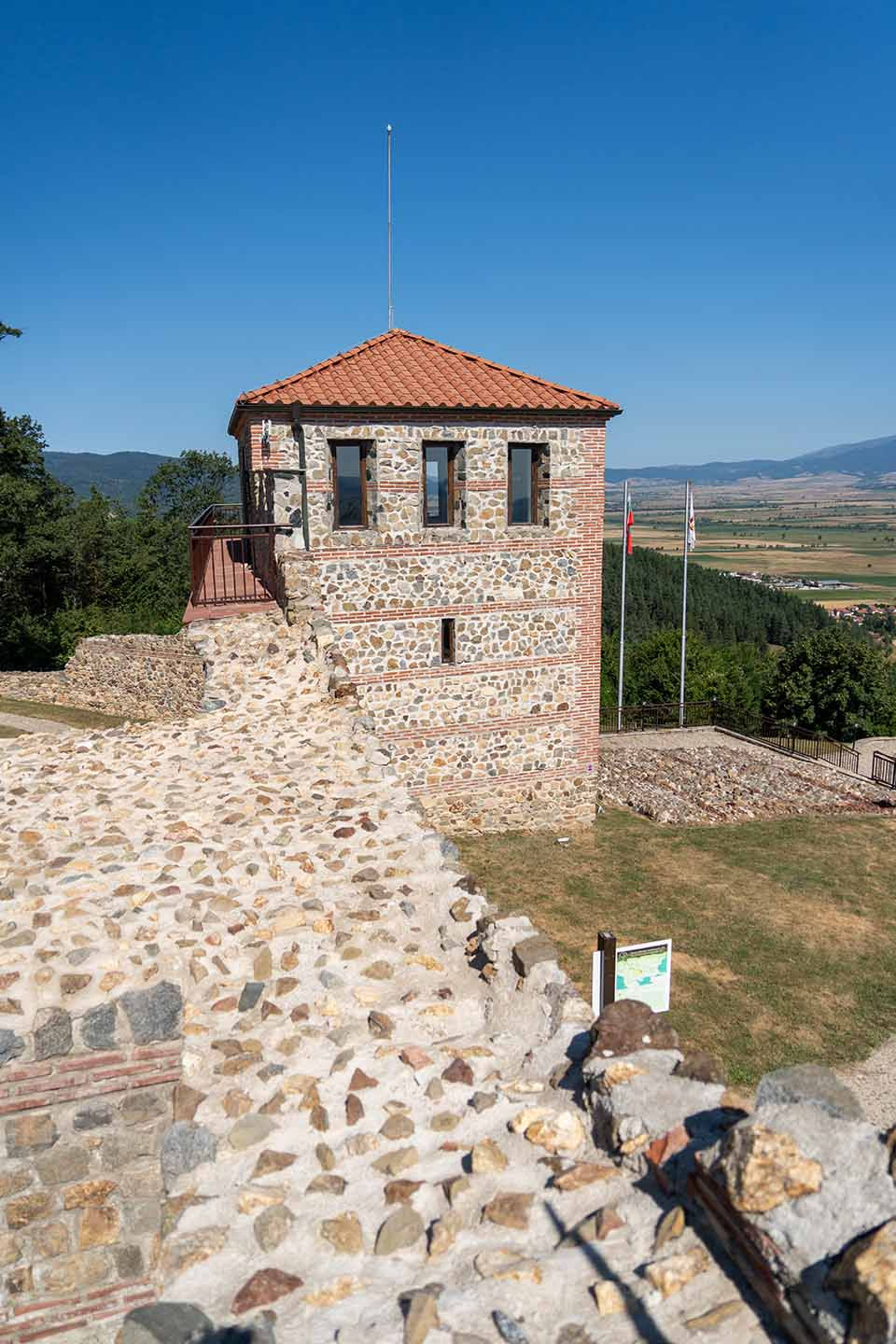
This is another exceptional day in which I rediscover the wonders of my dear Bulgaria!
Periods of habitation
Archaeological research on the hill of Saint Spas shows that the construction of the fortress began during the reign of Emperor Valentius Flavius, who ruled the Roman Empire from 364 to 378.

The location of the fortress was chosen deliberately and was designed to allow for observation of the valley and protection of its western part.

The settlement that emerged was in keeping with the gushing hot mineral springs at the foot, the ore deposits with magnetite sand throughout the region, and the strategic intersection of two ancient roads. The fortress is located near the ancient military, trade, and communication route from Rome through Aquileia, Ragusa, Scupi, Pautalia, Germania, Philippopolis, and Constantinople, as well as the difficultly accessible but most direct route to Macedonia.

The excavation of a larger area during the research contributed to the discovered artifacts – a total of 1078 finds (coins, jewelry, arrows and parts of weapons, tools, various ceramics), as well as numerous architectural remains and stratigraphic situations**, allowing to draw relevant conclusions and conclusions.
**They are related to the study of layers (strata) in the ground that contain archaeological or geological evidence. In archaeology, stratigraphic situations help to identify the temporal context of various artifacts, structures and human activities.
Stratigraphy is a science that studies layers of sediment, stones or archaeological artifacts and their time of formation. Stratigraphy is used to determine the temporal sequence of events and processes.

A total of five phases of habitation of the hill have been identified, which speaks of its significance and sustainability as a strategic and cultural early Christian center in the orbit of the major urban centers of antiquity - Serdica (present-day Sofia) and Pautalia (the area around present-day Kyustendil).
Thracians
Tracing the historical layers has shown that the earliest use of this site began in the second phase of the Early Iron Age (from the 8th century to the 6th century BC).
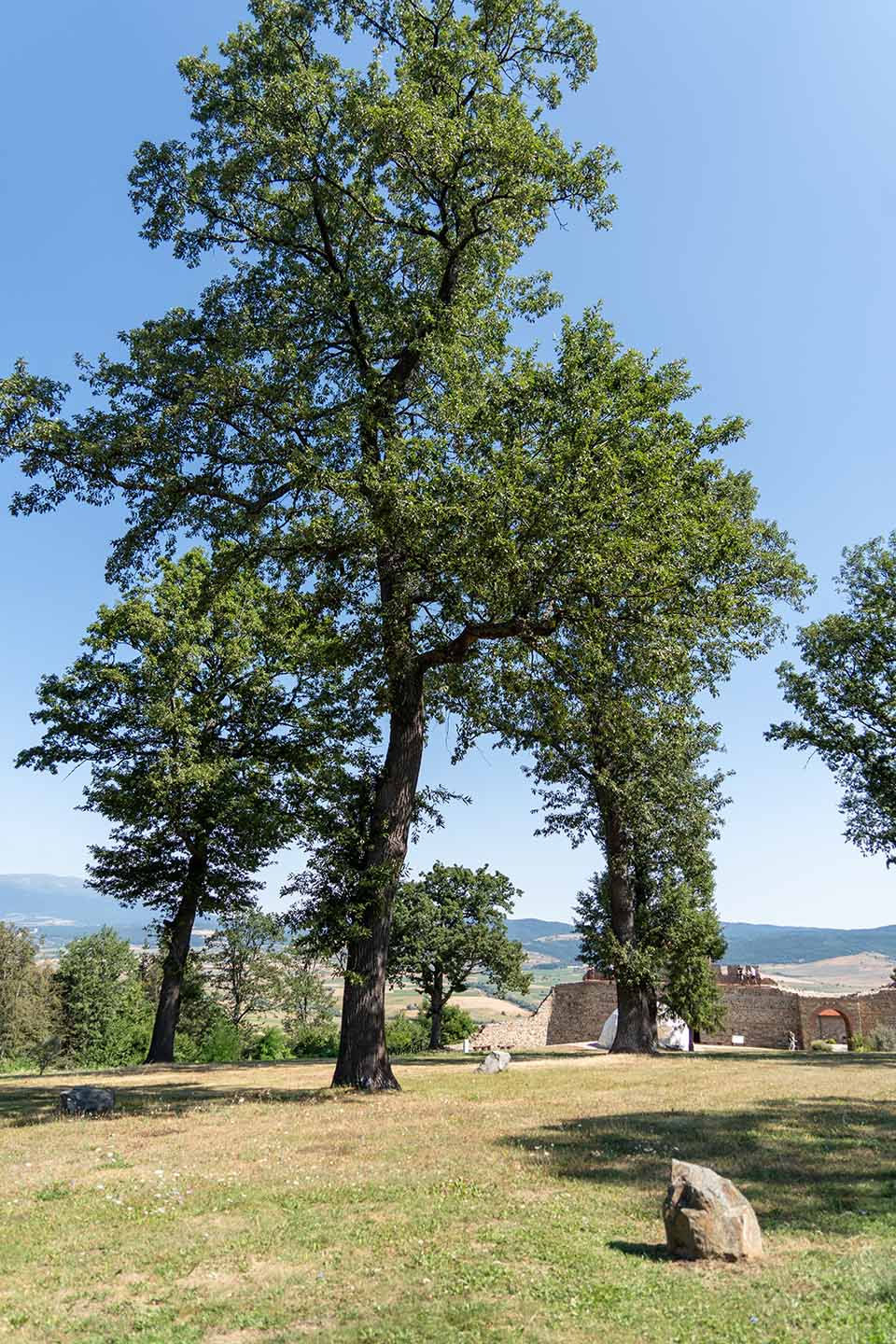
Numerous small and larger pits were discovered scattered throughout the entire area of the site. They are single or grouped in several, but all are filled with charcoal and fragments of ceramics. The fragments are of various types of vessels, made by hand. Urn-like and flattened forms predominate. Some of them have incised decoration, tongue-shaped handles, less often a relief strip with pinching and polishing. The pits definitely have a cult character, typical of the Thracian population. The lack of a prominent cultural layer from this era excludes settled life, but not the development of a pit sanctuary.
Romans
The second period of sporadic occupation of the site dates back to the late Roman period (from the 3rd century AD to the beginning of the 4th century AD). This is evidenced by coin finds, as well as some fragments of luxurious gray and red-lacquered ceramics. There are no certain traces of habitation.

Most likely, a pagan sanctuary functioned during this period, the remains of which were discovered in the northernmost part of the site. What little remains of it suggests a square plan with a narrow corridor in the middle and two rooms on the sides. A large part of it was destroyed during the construction of the early Christian church from the end of the 4th century.
First construction period
In the 3rd century, a fence wall of wooden stakes and a hedge was built around the periphery of the Sacred Hill, covered with clay, and burned in the middle of the 4th century during the uprising of the usurper Procopius*** (365–366).
***Procopius was a Roman general who declared himself emperor in 365 during the reign of Valens.
Procopius was born in Cilicia and was close to Emperor Julian. After Julian's death, he was supported by part of the army and proclaimed emperor in Constantinople. Procopius managed to hold on to power for several months, but was ultimately defeated by Valens and executed in 366.
The uprising of Procopius is an important event in the history of the Roman Empire, as it shows the instability of power during this period. It is also a testament to the ongoing power struggles between the various warlords and political factions in the empire.
Second construction period
In the late 60s of the 4th century, the governors of the late Roman province of Mediterranean Dacia undertook the fortification of the hill. A defensive stone fortress wall was built, with long sections of the fortress walls reinforced with several defensive battle towers at the most vulnerable points.

The protective fortress wall surrounds the entire upper part of the hill with an area of about one hectare.
Third construction period
During the extensive restoration campaign of the Byzantine Emperor Justinian the Great, who ruled from 527 AD to 565 AD, of fortresses and cities, the fortification system of the fortress was reconstructed, and during the reign of his successor Emperor Justin II, who ruled from 1565 to 1574, the northern fortress wall with two powerful corner rectangular battle towers and the fortress gate was built.

Life in the fortress ceased after 578, but the local population continued to live at the foot of the hill. During the construction of the sewerage system in the village of Belchin, remains of habitation during the Byzantine period and the Middle Ages were discovered in many places.
Public grain warehouse (horeum)
Christian religious complex
In 311, with the Edict of Serdica, the Roman Emperor Galerius rehabilitated Christianity, and in 313, with the Edict of Milan, Emperor Constantine the Great established Christianity as the official imperial religion, which also regulated religious life in the province of Inner Dacia (Dacia Mediteranea) with its capital Serdica (present-day Sofia).

The discovered Christian cult complex on the hill of St. Spas speaks of this period. It is located immediately north of the fortress gate.

In this place, almost to this day, the people of Belchin celebrate Spasovden – Ascension Day.
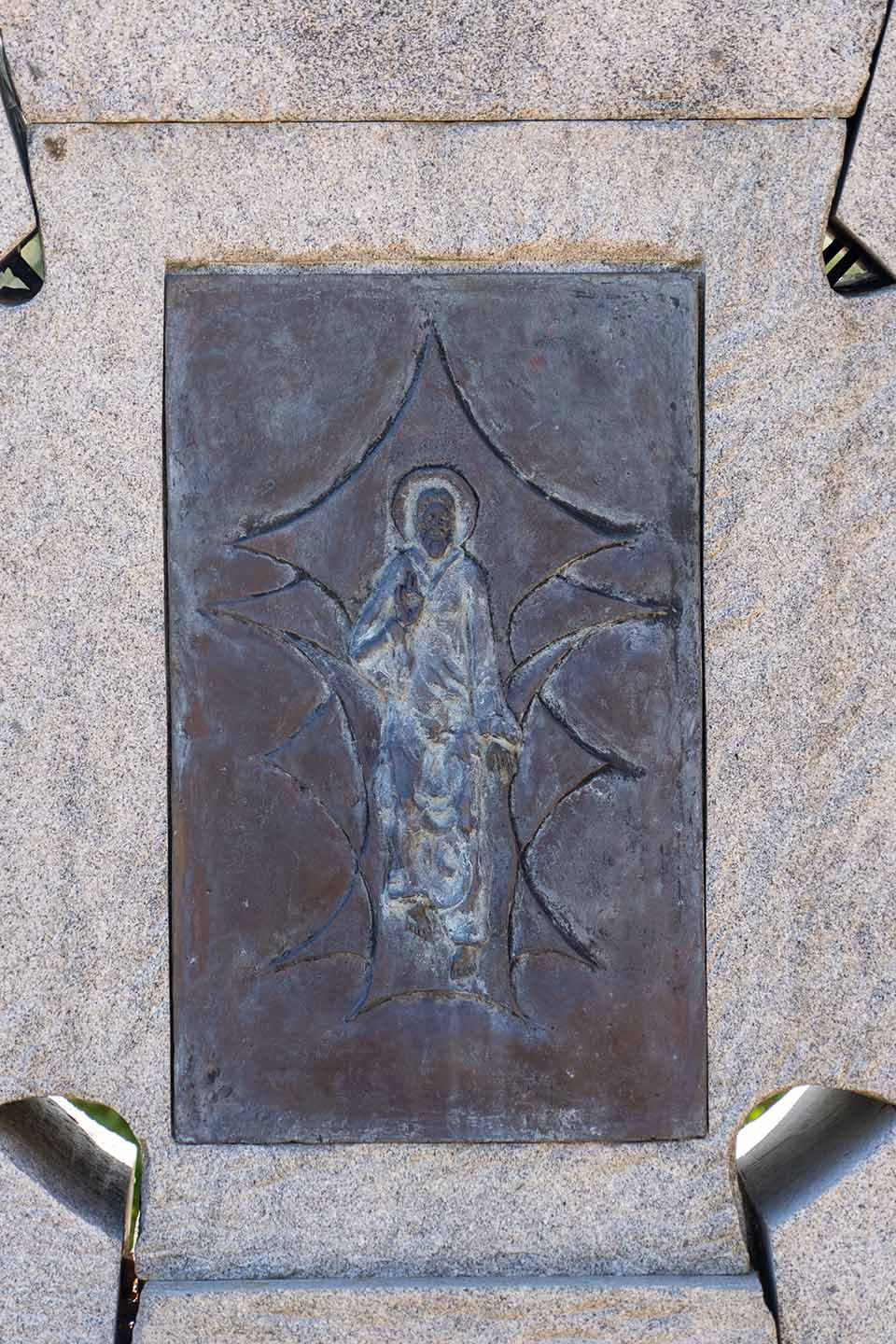
Until the 1960s, there was a votive cross here, placed under a centuries-old oak tree.

During the 2007 excavations of the fortress, the remains of three temples were discovered directly in front of its central entrance, built over the centuries literally on the remains of the previous ones.
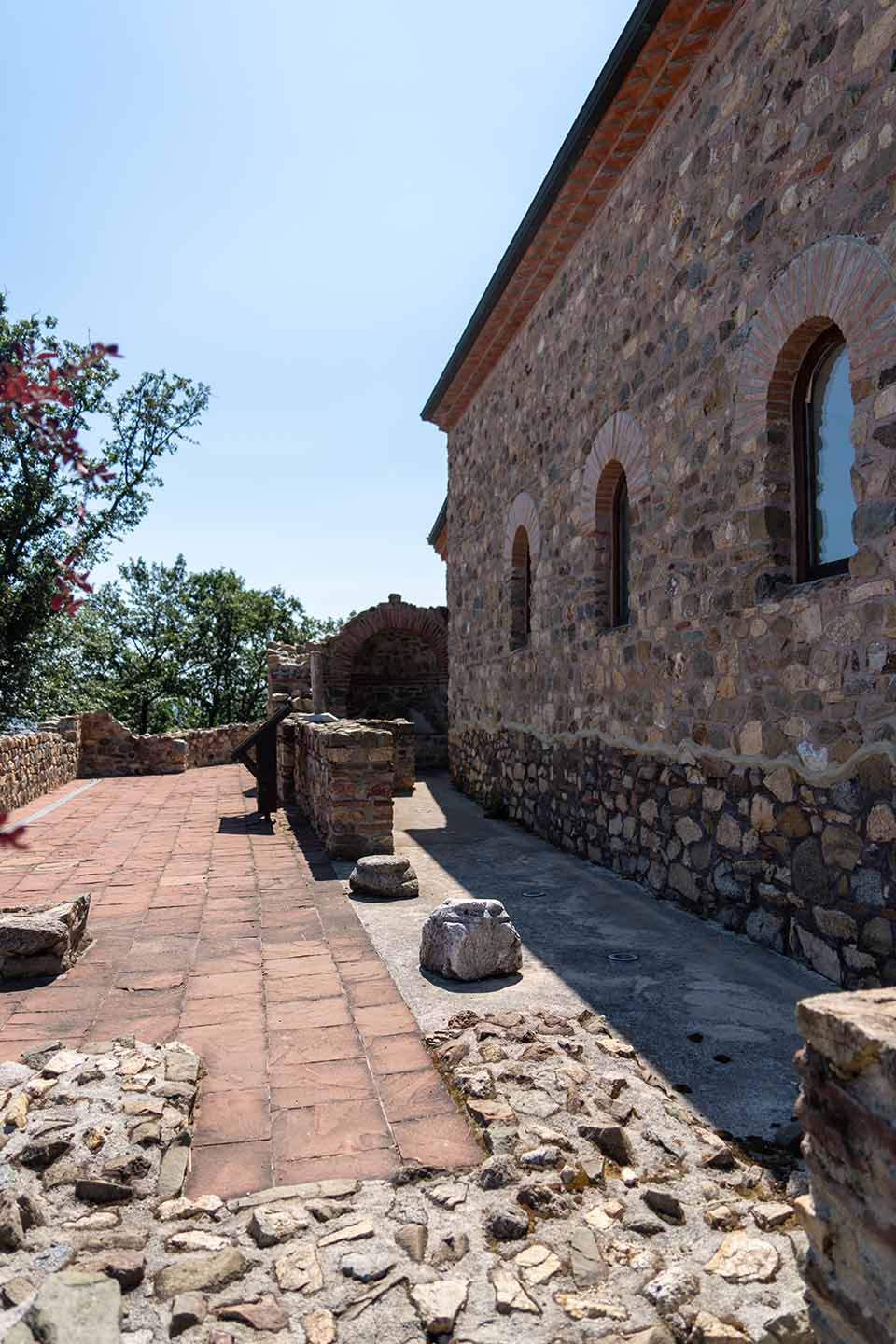
A curious find was found in the northern pastophorium (room) of the 6th-century basilica.
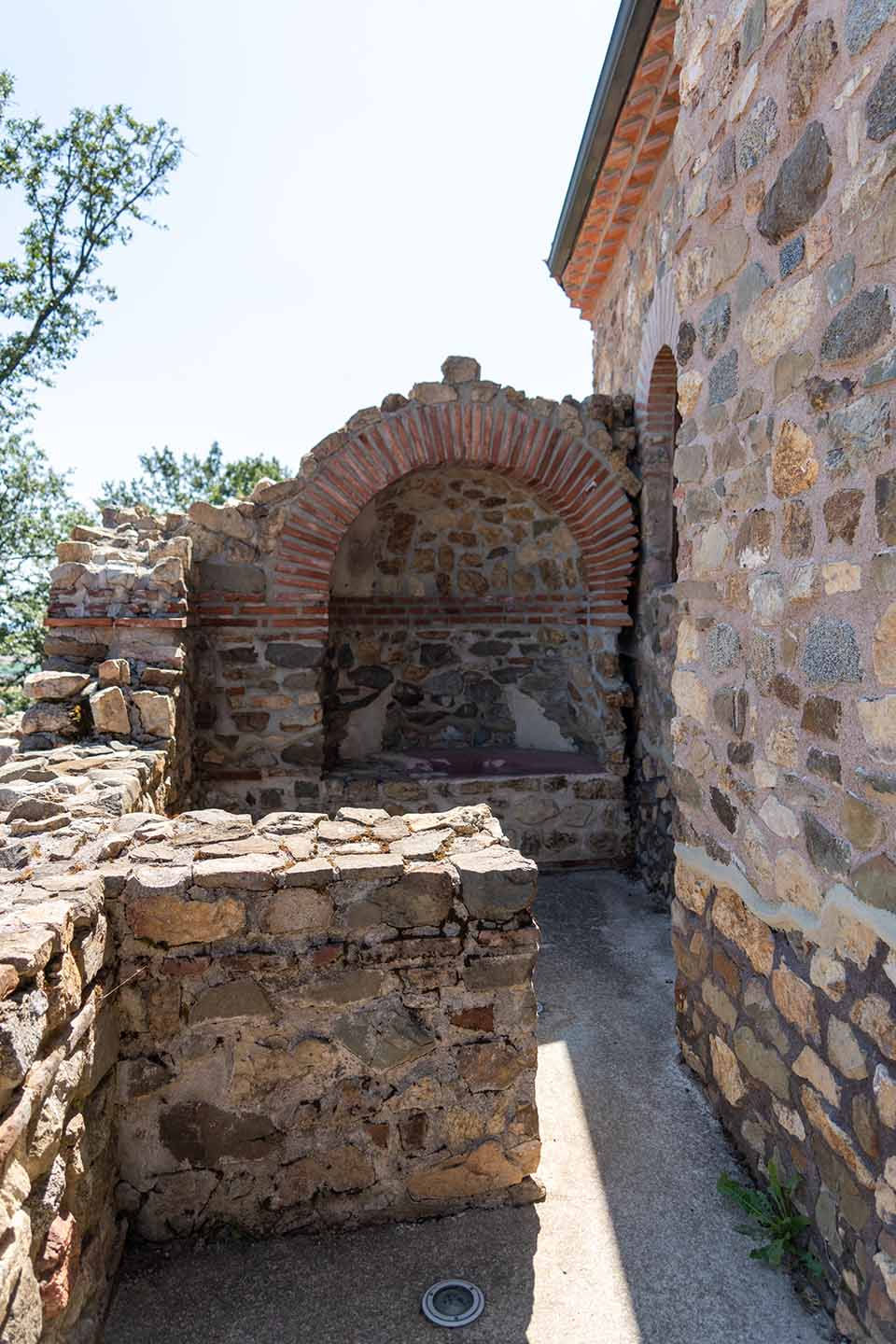
A baptistery has been discovered there.
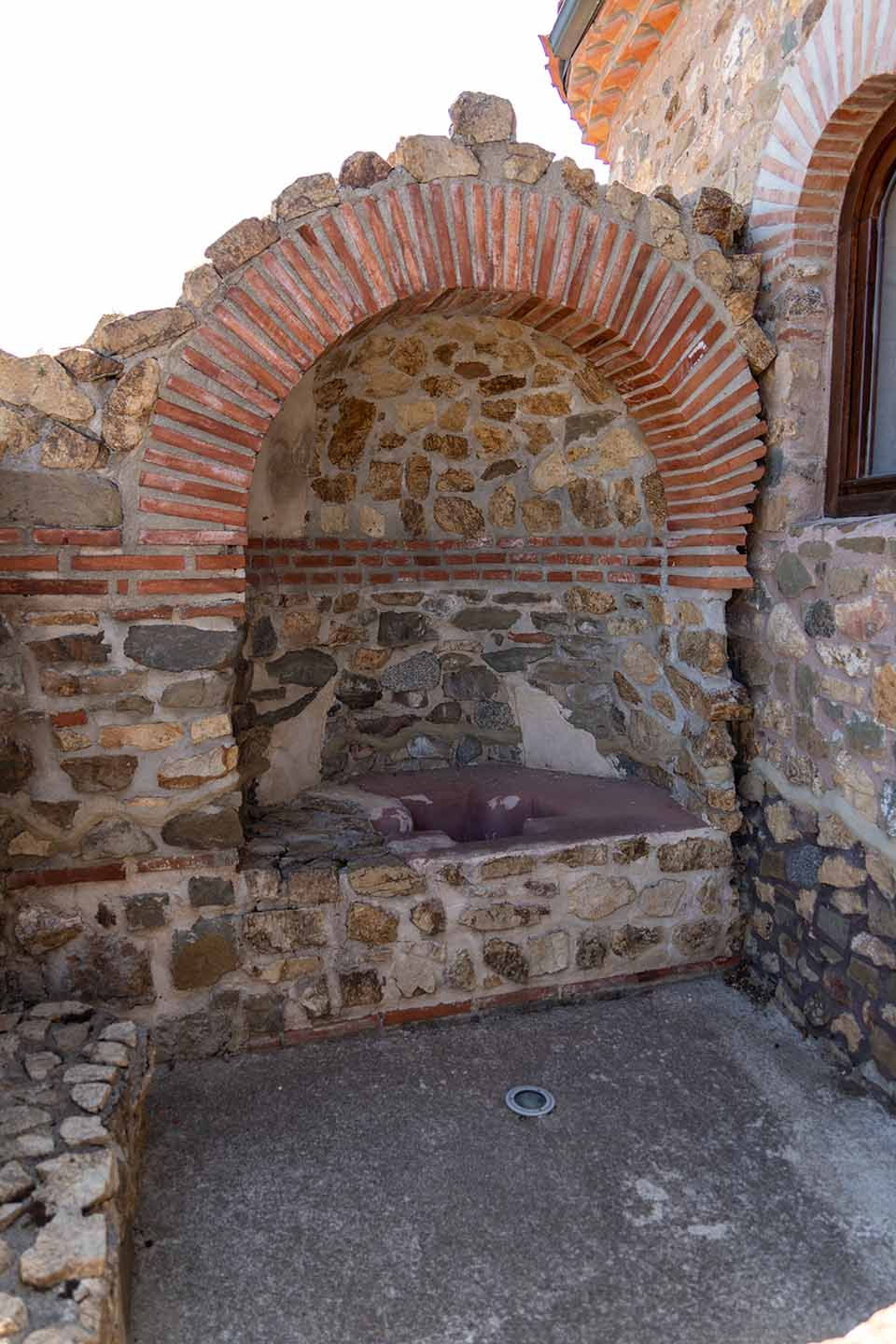
In early Christian architecture, this is a baptismal font, a room in the church or an annex to it, where in the first centuries of the recognition of Christianity the ritual of holy baptism was performed.
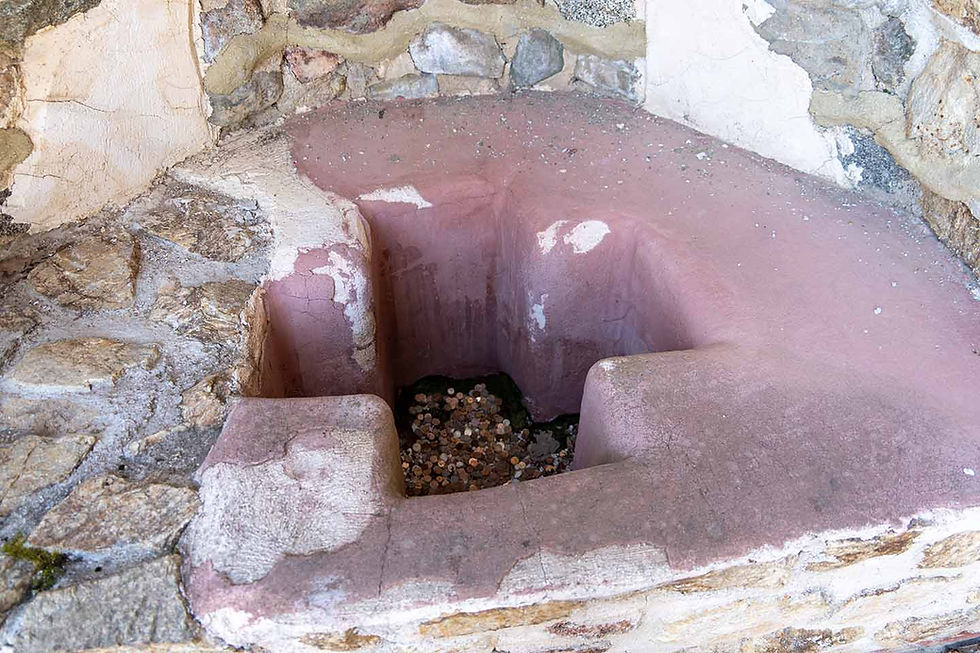
There is a piscina (pool) in the baptistery. Here it is built in the apse of the northern pastophorium. It is shaped like a cross, with a hole at the bottom for draining the water.
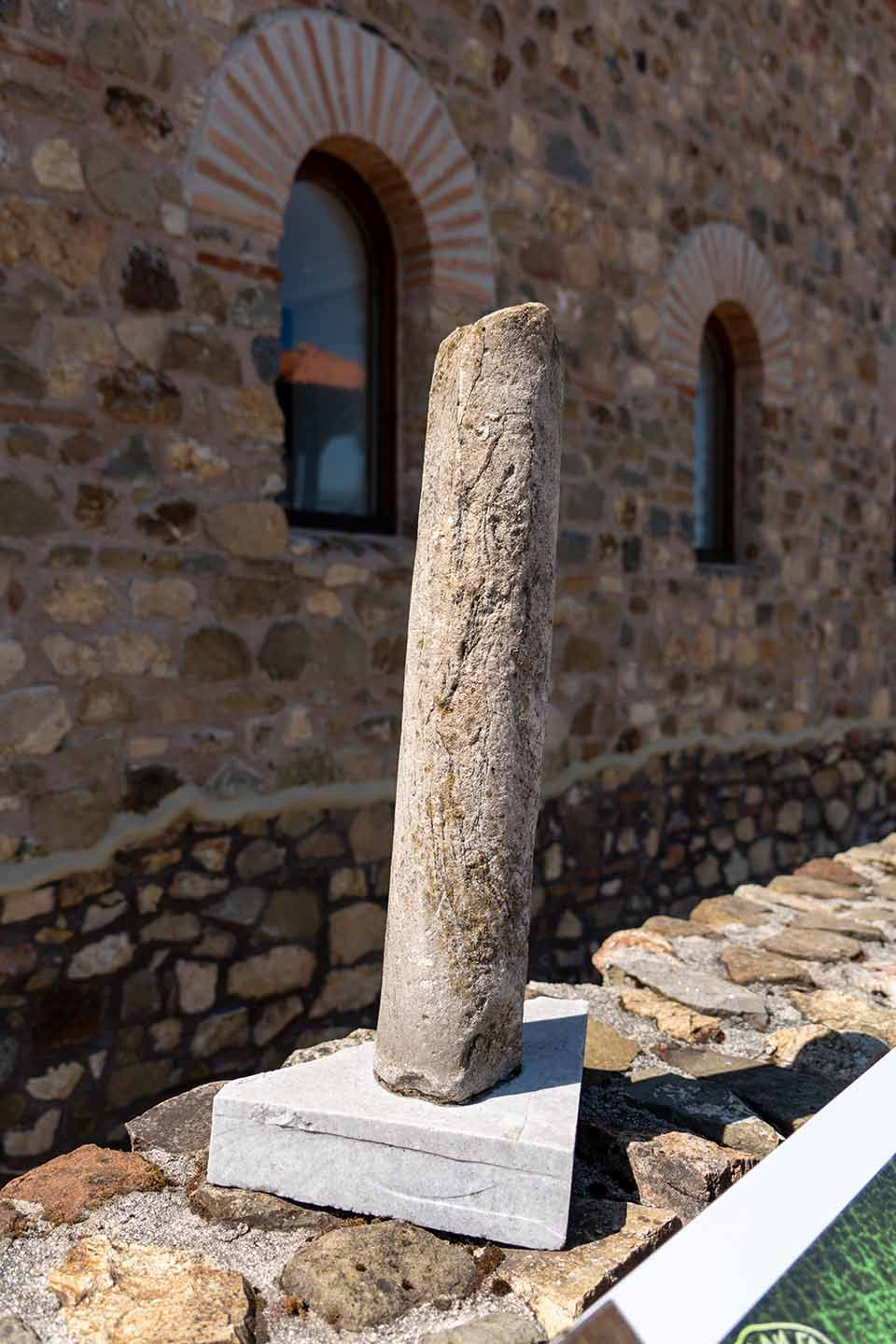
Nine centuries later, in the second half of the 15th century, a late medieval church was built on the ruins of the basilica. Material from the earlier basilica was used, but the construction was now mud-brick.

The church has a single nave, a single apse and is half-buried in the slope from the south.
The time of the construction of the Church of the Ascension of Christ is significant - precisely after the middle of the 15th century.
In the "Rila Tale" by Vladislav Grammatik, in the story about the transfer of the relics of Saint Ivan of Rila from Tarnovo to the Rila Monastery, the name of Presbyter John from the village of Belchin is mentioned.
This is the only spiritual person recorded with the place where he came from. It is obvious that he did something very significant and important, and what more significant deed is to build a temple to welcome the relics of the saint on their way to the Rila Holy Monastery?
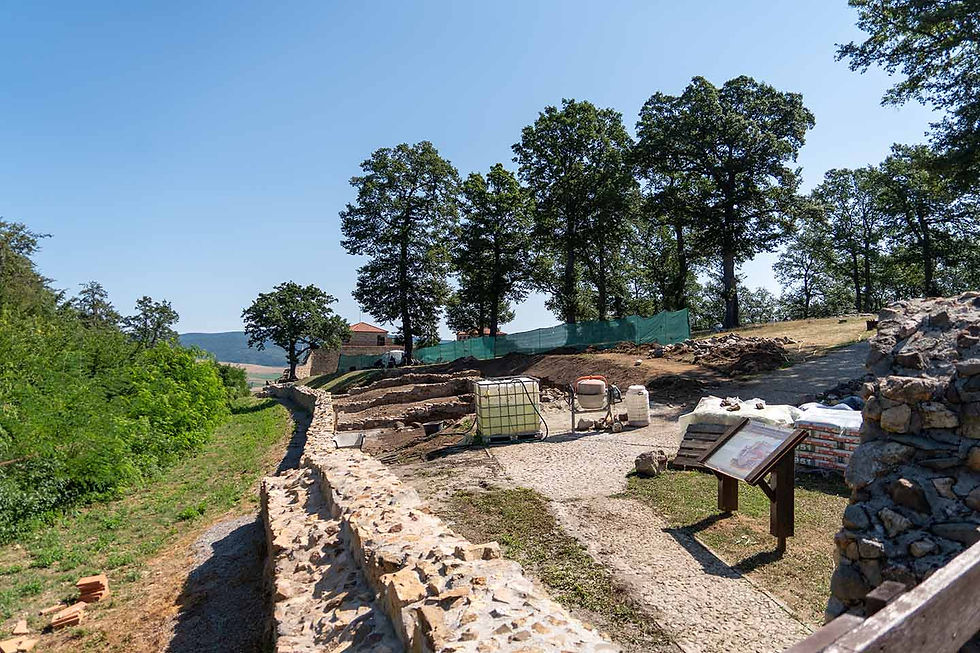
How to get to the village of Belchin, Samokov municipality?
Belchin is a village in Western Bulgaria. It is located in the Samokov Municipality, Sofia Region.

The village of Belchin is located in a valley between the Rila, Verila, Vitosha and Plana mountains. It is located 15 kilometers west of Samokov. The climate in winter is mild and in summer - cool. The air is clean, and the nature - beautiful and relatively virgin. The area has thermal waters with proven healing and prophylactic effects on the musculoskeletal system and skin dermatitis.
Belchin is located:
55 kilometers (about 1 hour and 13 minutes by car) from the capital
146 kilometers (about 1 hour and 59 minutes by car) from the city of Plovdiv
506 kilometers (about 5 hours and 49 minutes by car) from the city of Varna
384 kilometers (about 3 hours and 53 minutes by car) from the city of Burgas
How to get to Tsari Mali Grad?
Look for the village of Belchin, which is located at a fork in the main road Samokov – Dupnitsa. Then follow the signs.
The road will take you to a large parking lot where you can leave your car.
There are several ways to get to the fortress on the hill, but I will reveal two of them, which are extremely attractive.

"Tsar Mali Grad" Eco-trail
I offer you an unforgettable walk along the cool and shady "Tsar Mali Grad" eco-trail, leading from the parking lot to the fortress on the hill.

This is definitely my preferred way – an unforgettable start to the adventure amidst the centuries-old giants of Verila Mountain!
The eco-trail is wonderful – wide and fresh! Along it, you will find numerous benches and wooden gazebos for resting. The numerous signs with catchy messages further contribute to your perfect mood.

In no more than ten minutes of normal walking, without panting, you will find yourself at the end point of the eco-trail.

This is where the adventures begin!

From this point along the shady alley, in a minute you will find yourself in front of the entrance to the late antique Roman fortress and fortified settlement of Tsari Mali Grad.

However, the pleasant surprises are just beginning!
Entertainment for children
Numerous rope attractions for children have been built on the hill of St. Spas, providing the little ones with countless joyful moments!
For all those for whom walking along the eco-trail is difficult, the organizers offer a second, much easier, and no less attractive way to climb to the fortress at the top of the hill.
The funicular
I present to you the unique and one of a kind in Bulgaria rail passenger transport facility with cable drive.
You can learn more useful information about the facility's operating hours and ticket prices HERE.
And finally, my dear friends,
you shouldn't miss checking out
the special photo album with moments –
discovered, experienced, filmed and shared with you!












































































































































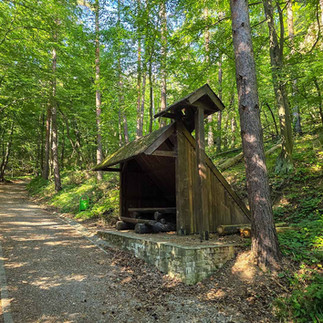












Comments